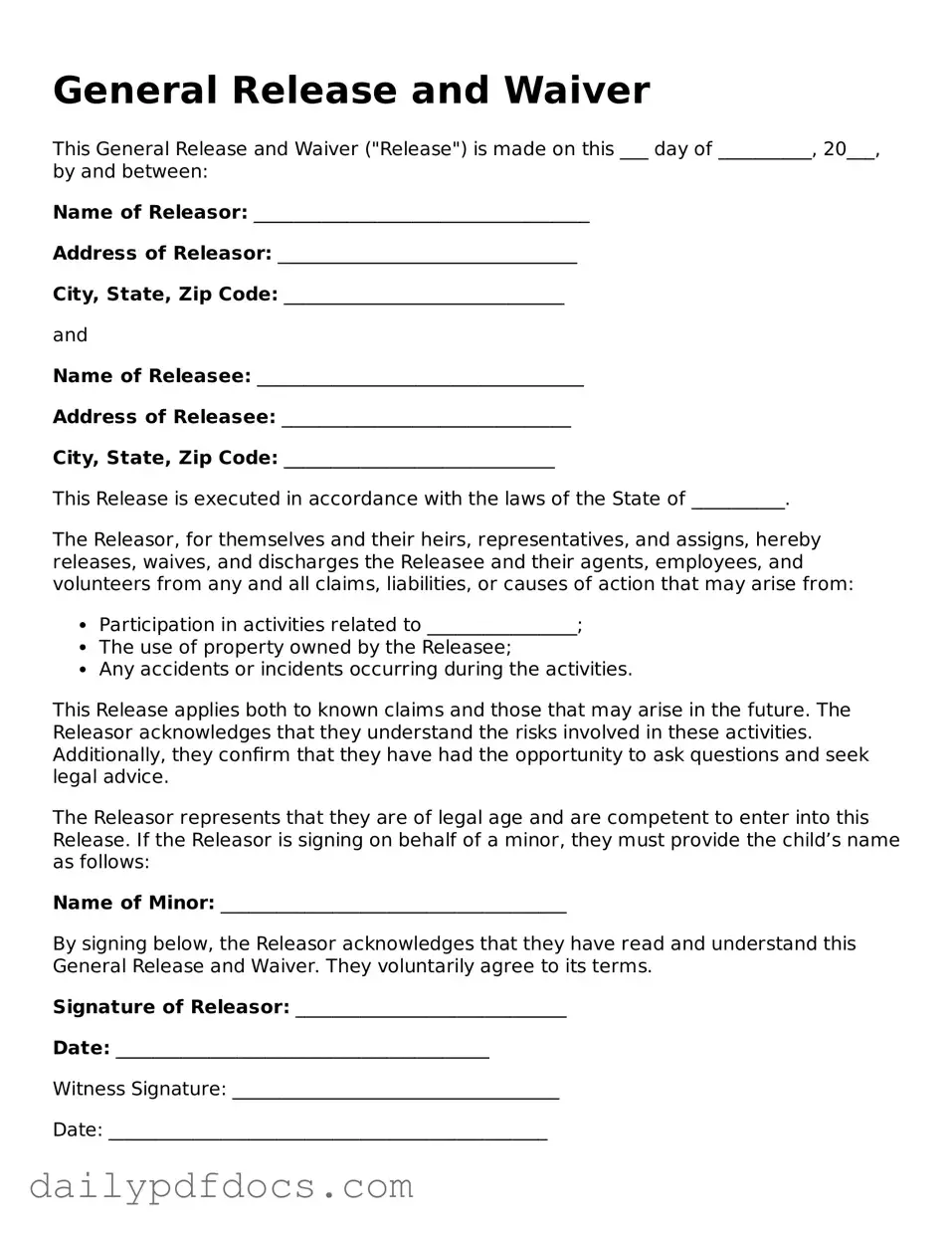Release of Liability Template
This Release of Liability ("Release") is made and entered into by and between [Participant's Name], residing at [Participant's Address], hereinafter referred to as "Participant," and [Organization's Name], located at [Organization's Address], hereinafter referred to as "Organization," on this [Date].
The Participant acknowledges that they have voluntarily chosen to participate in activities organized by the Organization, which may include but are not limited to [describe the activities]. Participant understands that these activities involve certain risks and dangers, which may include, but are not limited to, injury, illness, or even death. By signing this Release, the Participant intends to accept those risks and hold the Organization harmless.
This Release is governed by the laws of the State of [Your State], and any disputes arising out of this Release will be handled in accordance with the relevant laws of that state.
For and in consideration of being allowed to participate in the activities, the Participant hereby agrees to the following:
- To release and discharge the Organization, its directors, officers, employees, agents, and volunteers from any and all liabilities, claims, demands, actions, or causes of action that may arise from or be related to the Participant's participation in the activities.
- To assume all risks associated with participation, including those risks that may arise from the negligence or fault of the Organization.
- To indemnify and hold harmless the Organization from any claims resulting from injuries, damages, or losses sustained by the Participant in connection with the activities.
By signing below, the Participant confirms that they have read and fully understand this Release of Liability, and they are signing voluntarily.
Participant's Signature: ___________________________ Date: _______________
Printed Name: ____________________________________
Emergency Contact Name: __________________________
Emergency Contact Phone Number: __________________
